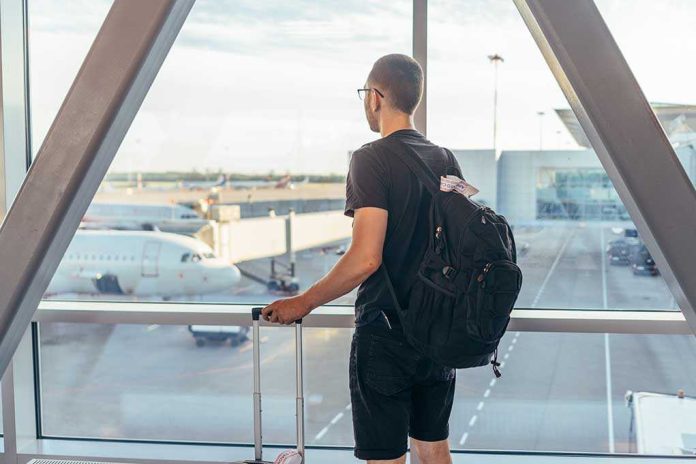
America’s skies face unprecedented risk as critical air traffic controller shortages—fueled by years of failed policy and federal mismanagement—threaten nationwide flight delays, safety, and economic stability.
Story Snapshot
- Critical air traffic controller shortages persist at major U.S. airports, risking widespread flight disruptions and safety lapses.
- Despite new hiring initiatives, the FAA remains well below staffing targets, with only a fraction of facilities fully staffed.
- Industry leaders and government reports warn of urgent operational and safety threats impacting millions of travelers.
- Longstanding training bottlenecks and federal inefficiency have left the aviation system vulnerable, with broader consequences for the economy and public trust.
Controller Shortages Threaten National Airspace and Travel Reliability
The Federal Aviation Administration is grappling with a persistent shortage of certified air traffic controllers, with major airports and high-traffic hubs especially hard-hit. Despite recent hiring surges and streamlined training programs, the agency remains far below its critical staffing goals. Only 23 out of 313 air traffic control facilities are fully staffed, leaving vast regions of U.S. airspace at risk for delays and operational breakdowns. This situation poses immediate threats to flight safety and reliability, undermining faith in federal oversight.
Industry experts and government watchdogs have repeatedly sounded alarms about the implications of these shortages. A November 2023 government report explicitly warned of urgent safety risks, citing controller fatigue, increased error rates, and the growing inability to manage traffic during peak hours. These warnings are not hypothetical: recent high-profile incidents, including a January 2025 mid-air collision, drew national scrutiny and exposed the consequences of systemic neglect. The stress on the aviation system echoes decades-old patterns of federal underfunding and bureaucratic inertia, which have failed to anticipate rising travel demand and inevitable retirements.
Federal Workforce Policy and Training Bottlenecks: Roots of the Crisis
The roots of the controller shortage crisis stretch back years, shaped by chronic underfunding, hiring freezes, and inflexible federal workforce policies. Controllers are required to retire at age 56, creating constant attrition that federal hiring programs have failed to offset. The COVID-19 pandemic further crippled the training pipeline, stranding potential recruits and accelerating retirements. Even with a 10.4% hiring increase in 2025 and ambitious plans to recruit over 8,900 new controllers by 2028, the academy’s graduation rate remains below 65%. Meanwhile, major hubs like New York TRACON continue to operate dangerously understaffed, straining the busiest airspace in the nation.
This chronic failure to modernize recruitment and expand collegiate partnerships has left the FAA playing catch-up. Training institutions such as Embry-Riddle Aeronautical University have taken steps to partner with the FAA, but the pace of progress is slow. Controller fatigue and attrition rates remain high, threatening not just operational efficiency, but public safety and national economic resilience.
Economic Fallout and Broader Industry Impacts
The consequences of persistent controller shortages extend far beyond airport delays. Passengers now face mounting travel disruptions and lost trust in the reliability of air travel. Airlines and airports—cornerstones of the American economy—are experiencing operational chaos and substantial financial losses. Delays ripple out to cargo, logistics, and tourism sectors, compounding economic pain. Billions of dollars are at stake, and the longer these shortages persist, the greater the threat to America’s global competitiveness and economic security. This is a direct result of years of government mismanagement and shortsighted priorities that have left critical infrastructure exposed.
Social impacts are equally severe. Families endure travel headaches, workers in the aviation sector face unsustainable stress, and public frustration grows. As federal officials scramble to expand hiring and training, Americans are left questioning whether their government can be trusted to safeguard not just their travel plans, but their broader security and prosperity.
Expert Calls for Reform and Conservative Solutions
Industry veterans and academic experts agree: the current staffing model is unsustainable, and only bold, common-sense reforms can restore confidence. Calls for privatization or structural overhaul of the air traffic control system are gaining traction, as federal agencies struggle to adapt. Experts urge the adoption of technology-driven training, streamlined hiring practices, and stronger partnerships with collegiate institutions to replenish the pipeline of skilled controllers. Conservative principles—emphasizing local control, efficiency, and accountability—offer a pathway to rebuilding a system that serves American families and businesses, rather than perpetuating bureaucratic failure.
Guarantee Schumer and Democrats will blame Trump. But, you'll be delayed for flights not because of Trump. Rather distinctively by Schumer.
FAA braces for nationwide flight disruptions as air traffic controller shortages hit major airportshttps://t.co/YFsPjcG08q
— SannCross (@CraigMi75530581) October 7, 2025
Until decisive action is taken, the nation’s airspace remains at risk. Americans deserve an aviation system that prioritizes safety, reliability, and economic strength. The ongoing controller shortage is a stark reminder of what happens when federal overreach and mismanagement erode the foundations of critical national infrastructure. The time for real reform is now—before more Americans pay the price for government inaction.
Sources:
FAA achieves 2025 air traffic controller hiring goal
Air traffic controller shortages
How the FAA is easing its air traffic controller shortage
New report sounds alarm on air traffic controller shortage














